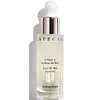What's inside
What's inside
 Key Ingredients
Key Ingredients

 Benefits
Benefits

 Concerns
Concerns

 Ingredients Side-by-side
Ingredients Side-by-side

Prunus Amygdalus Dulcis Oil
Skin ConditioningSqualane
EmollientCaprylic/Capric Triglyceride
MaskingPrunus Armeniaca Kernel Oil
MaskingVitis Vinifera Seed Oil
EmollientBorago Officinalis Seed Oil
EmollientCalophyllum Inophyllum Seed Oil
AntimicrobialCamellia Japonica Seed Oil
EmollientOenothera Biennis Oil
EmollientRubus Idaeus Seed Oil
EmollientRosa Canina Fruit Oil
EmollientSpilanthes Acmella Flower Extract
Skin ConditioningAlgae Extract
EmollientBrassica Campestris Seed Oil
Skin ConditioningRosa Damascena Flower Oil
MaskingCitronellol
PerfumingPelargonium Graveolens Oil
MaskingRosmarinus Officinalis Leaf Extract
AntimicrobialGeraniol
PerfumingRosa Centifolia Extract
Skin ConditioningDiacetyl Boldine
Skin ConditioningLinalool
PerfumingTocopherol
AntioxidantPrunus Amygdalus Dulcis Oil, Squalane, Caprylic/Capric Triglyceride, Prunus Armeniaca Kernel Oil, Vitis Vinifera Seed Oil, Borago Officinalis Seed Oil, Calophyllum Inophyllum Seed Oil, Camellia Japonica Seed Oil, Oenothera Biennis Oil, Rubus Idaeus Seed Oil, Rosa Canina Fruit Oil, Spilanthes Acmella Flower Extract, Algae Extract, Brassica Campestris Seed Oil, Rosa Damascena Flower Oil, Citronellol, Pelargonium Graveolens Oil, Rosmarinus Officinalis Leaf Extract, Geraniol, Rosa Centifolia Extract, Diacetyl Boldine, Linalool, Tocopherol
Water
Skin ConditioningPEG-8
HumectantGlycerin
HumectantCaprylic/Capric Triglyceride
MaskingPrunus Amygdalus Dulcis Oil
Skin ConditioningDicaprylyl Carbonate
EmollientSodium Polyacrylate
AbsorbentButyrospermum Parkii Butter
Skin ConditioningHydroxyacetophenone
AntioxidantPhenoxyethanol
PreservativeTheobroma Cacao Seed Butter
EmollientParfum
MaskingCarbomer
Emulsion StabilisingDisodium EDTA
Alpha-Glucan Oligosaccharide
CleansingBentonite
AbsorbentChondrus Crispus Extract
Skin ConditioningPassiflora Edulis Seed Oil
EmollientLimonene
PerfumingCitrus Aurantium Dulcis Peel Oil
MaskingPropanediol
SolventGlyceryl Acrylate/Acrylic Acid Copolymer
HumectantLinalool
PerfumingBenzyl Alcohol
PerfumingCitronellol
PerfumingLithothamnion Calcareum Extract
Skin ConditioningSodium Hydroxide
BufferingTheobroma Cacao Seed Extract
AntioxidantLitsea Cubeba Fruit Oil
MaskingCitrus Aurantifolia Oil
CleansingMusa Sapientum Flower Extract
Skin ConditioningCitral
PerfumingMyrciaria Dubia Fruit Extract
Skin ConditioningTocopherol
AntioxidantDehydroacetic Acid
PreservativeSodium Benzoate
MaskingCitric Acid
BufferingPotassium Sorbate
PreservativeWater, PEG-8, Glycerin, Caprylic/Capric Triglyceride, Prunus Amygdalus Dulcis Oil, Dicaprylyl Carbonate, Sodium Polyacrylate, Butyrospermum Parkii Butter, Hydroxyacetophenone, Phenoxyethanol, Theobroma Cacao Seed Butter, Parfum, Carbomer, Disodium EDTA, Alpha-Glucan Oligosaccharide, Bentonite, Chondrus Crispus Extract, Passiflora Edulis Seed Oil, Limonene, Citrus Aurantium Dulcis Peel Oil, Propanediol, Glyceryl Acrylate/Acrylic Acid Copolymer, Linalool, Benzyl Alcohol, Citronellol, Lithothamnion Calcareum Extract, Sodium Hydroxide, Theobroma Cacao Seed Extract, Litsea Cubeba Fruit Oil, Citrus Aurantifolia Oil, Musa Sapientum Flower Extract, Citral, Myrciaria Dubia Fruit Extract, Tocopherol, Dehydroacetic Acid, Sodium Benzoate, Citric Acid, Potassium Sorbate
 Reviews
Reviews

Ingredients Explained
These ingredients are found in both products.
Ingredients higher up in an ingredient list are typically present in a larger amount.
This ingredient is an emollient, solvent, and texture enhancer. It is considered a skin-softener by helping the skin prevent moisture loss.
It helps thicken a product's formula and makes it easier to spread by dissolving clumping compounds.
Caprylic Triglyceride is made by combining glycerin with coconut oil, forming a clear liquid.
While there is an assumption Caprylic Triglyceride can clog pores due to it being derived from coconut oil, there is no research supporting this.
Learn more about Caprylic/Capric TriglycerideCitronellol is used to add fragrance/parfum to a product. It is often derived from plants such as roses. In fact, it can be found in many essential oils including geranium, lavender, neroli, and more. The scent of Citronellol is often described as "fresh, grassy, and citrus-like".
Since the Citronellol molecule is already unstable, Citronellol becomes irritating on the skin when exposed to air.
Citronellol is a modified terpene. Terpenes are unsaturated hydrocarbons found in plants. They make up the primary part of essential oils.
Citronellol is not able to be absorbed into deeper layers of the skin. It has low permeability,
Citronellol is also a natural insect repellent.
Learn more about CitronellolLinalool is a fragrance and helps add scent to products. It's derived from common plants such as cinnamon, mint, citrus, and lavender.
Like Limonene, this ingredient oxidizes when exposed to air. Oxidized linalool can cause allergies and skin sensitivity.
This ingredient has a scent that is floral, spicy tropical, and citrus-like.
Learn more about LinaloolPrunus Amygdalus Dulcis Oil comes from the sweet almond, a tree native to Iran. This oil has no fragrance and is non-volatile.
Almonds contain healthy fats, vitamins, and minerals. It is a rich source of Vitamin E, a great antioxidant and skin conditioning ingredient. Sweet almond oil contains fatty acids such as linolenic acid and triglycerides.
The content of sweet almond oil makes it a great emollient; it can help soften and hydrate your skin. Emollients create a barrier over your skin to trap moisture in. Sweet almond oil has antioxidant properties.
Those with an almond allergy should be careful of this ingredient and speak with a professional about using it in your skincare.
This ingredient may not be fungal-acne safe.
Learn more about Prunus Amygdalus Dulcis OilTocopherol (also known as Vitamin E) is a common antioxidant used to help protect the skin from free-radicals and strengthen the skin barrier. It's also fat soluble - this means our skin is great at absorbing it.
Vitamin E also helps keep your natural skin lipids healthy. Your lipid skin barrier naturally consists of lipids, ceramides, and fatty acids. Vitamin E offers extra protection for your skin’s lipid barrier, keeping your skin healthy and nourished.
Another benefit is a bit of UV protection. Vitamin E helps reduce the damage caused by UVB rays. (It should not replace your sunscreen). Combining it with Vitamin C can decrease sunburned cells and hyperpigmentation after UV exposure.
You might have noticed Vitamin E + C often paired together. This is because it is great at stabilizing Vitamin C. Using the two together helps increase the effectiveness of both ingredients.
There are often claims that Vitamin E can reduce/prevent scarring, but these claims haven't been confirmed by scientific research.
Learn more about Tocopherol